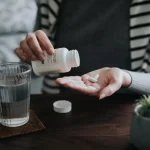“Blue waffle” is not a real medical condition or sexually transmitted infection (STI). It refers to some shocking and misleading images and content that have spread misinformation on social media and other sites.
The claim about “blue waffle disease” is considered an internet hoax. The disturbing images often associated with it are believed to be manipulated and do not represent an actual infection or symptoms. There’s no credible evidence that a STI fitting that description truly exists.
While sexual health is an important topic, false claims about “blue waffle” or other fictional STIs can spread unnecessary fear. There are enough real issues to focus health communication on regarding reproductive health and preventing issues like HIV, chlamydia, syphilis and gonorrhea through testing and safe sexual contact using protection.
Is STI Real or Fake?
Rather than rely on unverified internet claims as evidence of new diseases, I’d encourage discussing sexual health openly with medical professionals. They stay up-to-date on research related to real diagnosed infections. A doctor can also provide sound guidance tailored to one’s individual needs and situation to support wellbeing.
Are the STI symptoms Real?
Yes, the symptoms of real, medically recognized sexually transmitted infections (STIs) are certainly real. Some common symptoms that may indicate an STI include:
- Discharge from the penis, vagina or anus
- Painful urination or intercourse
- Itching, irritation, soreness or swelling of the genitals
- Rashes or sores on genitals or mouth
- Pain in lower abdomen
- Swollen glands
- Fever, fatigue, headache
Keep in mind symptoms can range dramatically depending on the specific STI. Some may not have noticeable symptoms at first or ever in some cases – which is why getting regularly tested is so important even without symptoms.
If you experience any concerning discharge, soreness or other symptoms in your genital region or notice anything unusual following sexual contact, it is important you see your doctor. Getting tested is the only way to diagnose if an STI is present and determine treatment if needed.
Preventing STIs
There are several effective ways to help prevent contracting real sexually transmitted infections (STIs):
- Use protection/contraceptives such as condoms, dental dams or internal condoms each time you have sex. This protects against pathogens in bodily fluids that can lead to STIs. Make sure to use them properly every single time.
- Get tested often if sexually active, even without symptoms. And ensure any partners get tested before sex without condoms. This allows detection and treatment of STIs to prevent spread.
- Ask potential partners about their STI status and sexual history honestly. While it can be an awkward conversation, transparency around health issues is crucial.
- Receive vaccines available for pathogens like hepatitis B or HPV that can cause viral STIs. Vaccines train immune defenses against specific infections.
- Avoid risky sexual contact with people who inject drugs or have unsafe sex – behavior likely contributing to higher STI rates among certain groups.
- Never share needles or work if engaging in IV drug use. This also fuels transmission of bloodborne pathogens.
5 Reasons Why Sex Education important?
Comprehensive sex education is extremely important for several reasons:
- It promotes sexual health and responsibility. Accurate, evidence-based information about contraceptive options, preventing STIs, consent, healthy relationships and more allows people to make informed, responsible choices about their sexual activities.
- It reduces risky behaviors. Studies show that fact-based sex ed can delay initial sexual activity in teens and reduce unwanted pregnancies and STIs by encouraging safer sex practices when people do become sexually active.
- It creates open dialogue. Sex ed fosters honest, judgment-free discussion and questions about sexual health that some youth may not otherwise have access to from parents/families.
- It dispels myths. Without proper sex ed, people often rely on peers or questionable internet sources that spread false information, myths and harmful stereotypes around human sexuality that can undermine health.
- It has public health benefits. Comprehensive sex education leads to healthier outcomes regarding sexual transmission rates of HIV and infections like HPV based on research. This has profound economic and societal costs over time.
Conclusion
Blue waffle is a fictional internet myth about a grossly disturbing sexually transmitted infection that does not exist based on available evidence. However, there are unfortunately real issues regarding sexual health and infectious diseases that do demand serious awareness and responsible action.







